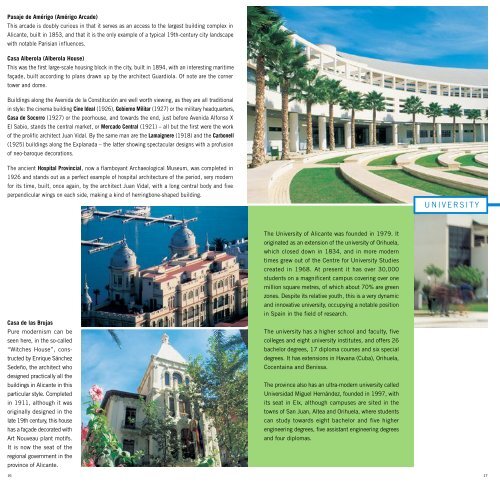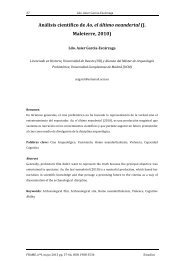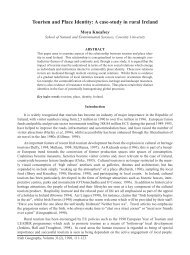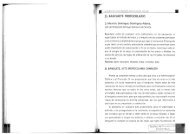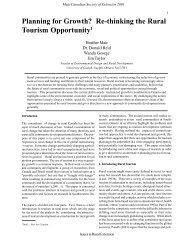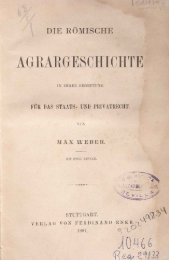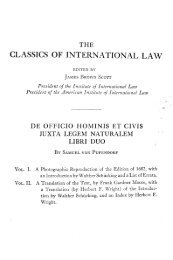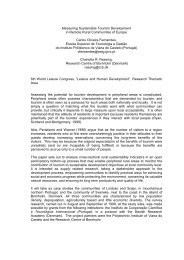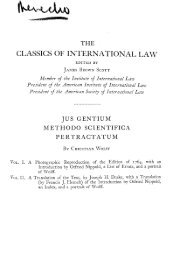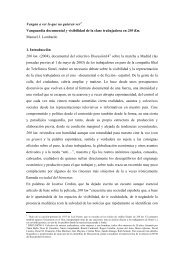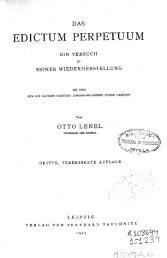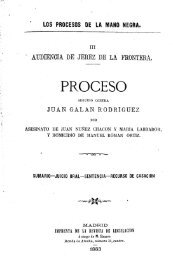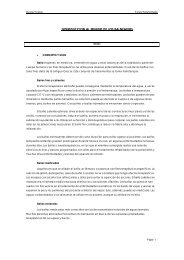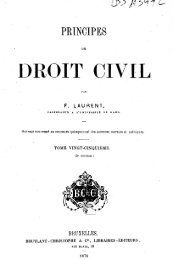Alicante Step by step - Universidad de Sevilla
Alicante Step by step - Universidad de Sevilla
Alicante Step by step - Universidad de Sevilla
Create successful ePaper yourself
Turn your PDF publications into a flip-book with our unique Google optimized e-Paper software.
Pasaje <strong>de</strong> Amérigo (Amérigo Arca<strong>de</strong>)<br />
This arca<strong>de</strong> is doubly curious in that it serves as an access to the largest building complex in<br />
<strong>Alicante</strong>, built in 1853, and that it is the only example of a typical 19th-century city landscape<br />
with notable Parisian influences.<br />
Casa Alberola (Alberola House)<br />
This was the first large-scale housing block in the city, built in 1894, with an interesting maritime<br />
faça<strong>de</strong>, built according to plans drawn up <strong>by</strong> the architect Guardiola. Of note are the corner<br />
tower and dome.<br />
Buildings along the Avenida <strong>de</strong> la Constitución are well worth viewing, as they are all traditional<br />
in style: the cinema building Cine I<strong>de</strong>al (1926), Gobierno Militar (1927) or the military headquarters,<br />
Casa <strong>de</strong> Socorro (1927) or the poorhouse, and towards the end, just before Avenida Alfonso X<br />
El Sabio, stands the central market, or Mercado Central (1921) – all but the first were the work<br />
of the prolific architect Juan Vidal. By the same man are the Lamaignere (1918) and the Carbonell<br />
(1925) buildings along the Explanada – the latter showing spectacular <strong>de</strong>signs with a profusion<br />
of neo-baroque <strong>de</strong>corations.<br />
The ancient Hospital Provincial, now a flamboyant Archaeological Museum, was completed in<br />
1926 and stands out as a perfect example of hospital architecture of the period, very mo<strong>de</strong>rn<br />
for its time, built, once again, <strong>by</strong> the architect Juan Vidal, with a long central body and five<br />
perpendicular wings on each si<strong>de</strong>, making a kind of herringbone-shaped building.<br />
Casa <strong>de</strong> las Brujas<br />
Pure mo<strong>de</strong>rnism can be<br />
seen here, in the so-called<br />
“Witches House”, cons-<br />
tructed <strong>by</strong> Enrique Sánchez<br />
Se<strong>de</strong>ño, the architect who<br />
<strong>de</strong>signed practically all the<br />
buildings in <strong>Alicante</strong> in this<br />
particular style. Completed<br />
in 1911, although it was<br />
originally <strong>de</strong>signed in the<br />
late 19th century, this house<br />
has a faça<strong>de</strong> <strong>de</strong>corated with<br />
Art Nouveau plant motifs.<br />
It is now the seat of the<br />
regional government in the<br />
province of <strong>Alicante</strong>.<br />
The University of <strong>Alicante</strong> was foun<strong>de</strong>d in 1979. It<br />
originated as an extension of the university of Orihuela,<br />
which closed down in 1834, and in more mo<strong>de</strong>rn<br />
times grew out of the Centre for University Studies<br />
created in 1968. At present it has over 30,000<br />
stu<strong>de</strong>nts on a magnificent campus covering over one<br />
million square metres, of which about 70% are green<br />
zones. Despite its relative youth, this is a very dynamic<br />
and innovative university, occupying a notable position<br />
in Spain in the field of research.<br />
The university has a higher school and faculty, five<br />
colleges and eight university institutes, and offers 26<br />
bachelor <strong>de</strong>grees, 17 diploma courses and six special<br />
<strong>de</strong>grees. It has extensions in Havana (Cuba), Orihuela,<br />
Cocentaina and Benissa.<br />
The province also has an ultra-mo<strong>de</strong>rn university called<br />
<strong>Universidad</strong> Miguel Hernán<strong>de</strong>z, foun<strong>de</strong>d in 1997, with<br />
its seat in Elx, although campuses are sited in the<br />
towns of San Juan, Altea and Orihuela, where stu<strong>de</strong>nts<br />
can study towards eight bachelor and five higher<br />
engineering <strong>de</strong>grees, five assistant engineering <strong>de</strong>grees<br />
and four diplomas.<br />
UNIVERSITY<br />
16 17


